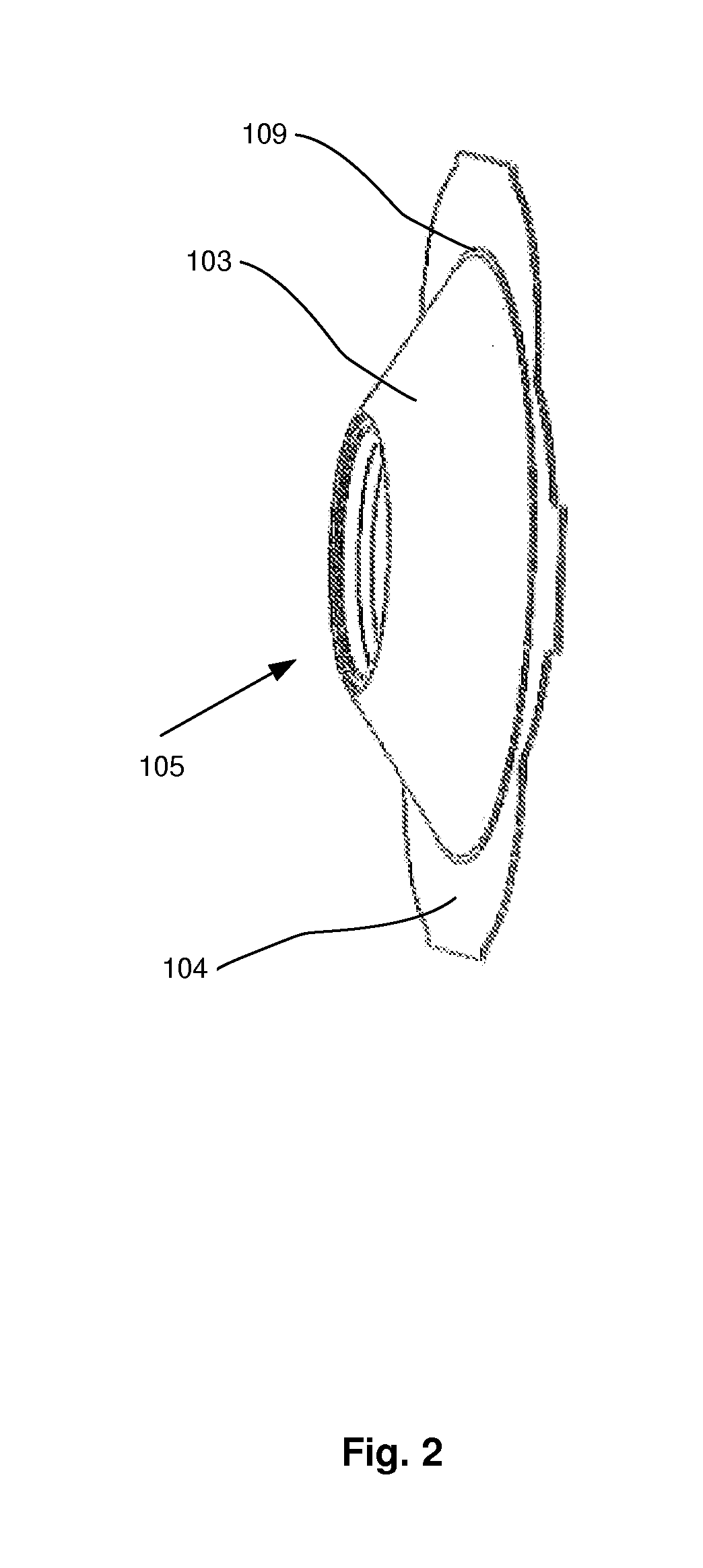Tracheostoma plaster
a tracheostoma and plaster technology, applied in the field of tracheostoma plaster, can solve the problems of inferior lung capacity or need of respiratory treatment, inability to obtain enough air, and inability to achieve normal nasal function
- Summary
- Abstract
- Description
- Claims
- Application Information
AI Technical Summary
Benefits of technology
Problems solved by technology
Method used
Image
Examples
Embodiment Construction
[0021]The following description focuses on an embodiment of the present invention applicable to a system for holding a tracheostoma device over a tracheostoma of a patient.
[0022]According to a first embodiment, disclosed as an exploded view in FIG. 1, a device 100 for holding a tracheostoma device, such as a HME, speech valve, etc, i.e. a tracheostoma device holder, is provided. The device comprises a tubular portion 101 for receiving the tracheostoma device in the distal end thereof. The tubular portion 101 may be of a circular cross-section, in a plane perpendicular to the central axis of the tubular portion 101. In the proximal end of the tubular portion 101 a flange 102 is provided, around the proximal opening of the tubular portion 101. The flange 102 comprises an inner rigid portion 103 and an outer more flexible portion 104. The flange 102 extends radially outwards from a proximal part of the tubular portion 101, in a plane perpendicular to the central axis of the tubular por...
PUM
 Login to View More
Login to View More Abstract
Description
Claims
Application Information
 Login to View More
Login to View More - R&D
- Intellectual Property
- Life Sciences
- Materials
- Tech Scout
- Unparalleled Data Quality
- Higher Quality Content
- 60% Fewer Hallucinations
Browse by: Latest US Patents, China's latest patents, Technical Efficacy Thesaurus, Application Domain, Technology Topic, Popular Technical Reports.
© 2025 PatSnap. All rights reserved.Legal|Privacy policy|Modern Slavery Act Transparency Statement|Sitemap|About US| Contact US: help@patsnap.com



